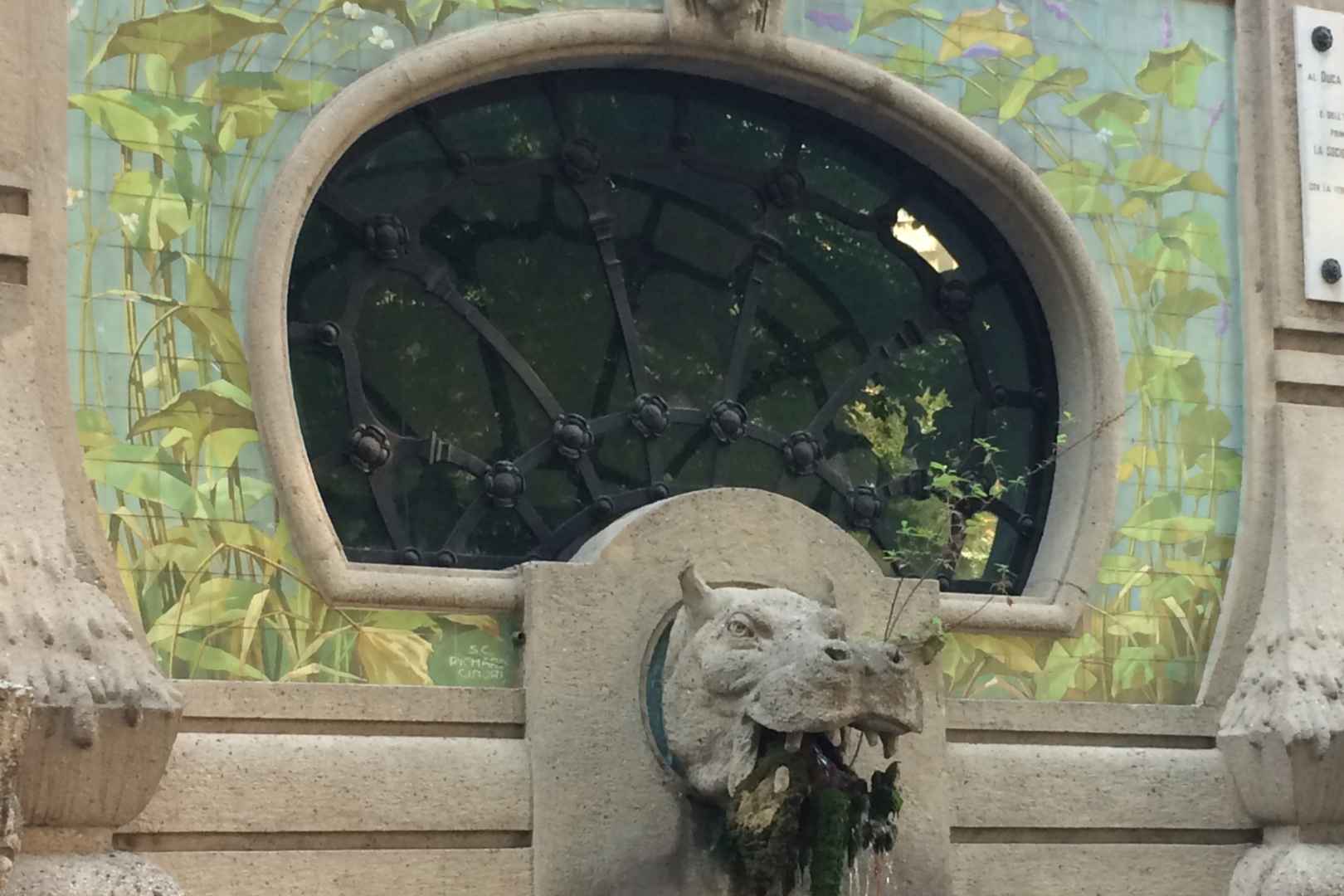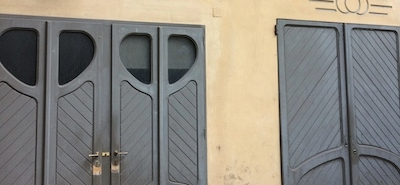As you wander through the enchanting streets of Porta Venezia, each Art Nouveau structure reveals a unique story of freedom, creativity, and a departure from tradition. From Palazzo Castiglioni to Casa Campanini, the artistic spirit of the era invites you to explore, admire, and reflect on the vibrant history that continues to inspire modern design. Embrace the magic of this architectural journey, where every glance upwards reveals the intricate beauty of a bygone era, still resonating in the heart of Milan.
Porta Venezia stands as a testament to Milan\’s rich architectural heritage, particularly its stunning examples of Art Nouveau, known locally as Liberty style. This district offers a visual feast for architecture enthusiasts and casual observers alike, with its elegant early 20th-century buildings adorning the streets. The neighborhood is renowned for its concentration of Liberty style architecture, which flourished in Milan during the late 19th and early 20th centuries. This artistic movement, characterized by its graceful lines, fluid shapes, and nature-inspired motifs, left an indelible mark on Porta Venezia\’s urban landscape.
The presence of these architectural marvels in Porta Venezia not only beautifies the district but also serves as a living museum of Milan\’s artistic history. The preservation of these buildings allows modern visitors to step back in time and appreciate the innovative spirit and craftsmanship of the Art Nouveau era.Porta Venezia\’s rich architectural heritage, particularly its Liberty style buildings, makes it a must-visit destination for anyone interested in art and architecture. The district stands as a testament to Milan\’s commitment to preserving its cultural legacy while embracing modernity, offering a unique blend of historical charm and contemporary vibrancy.
Discovering Art Nouveau in Porta Venezia
In the heart of Porta Venezia, even the architecture speaks to the spirit of freedom and creativity. The Art Nouveau movement, one of the most revolutionary developments of the early twentieth century, weaves its way through the more traditional, staid buildings of the previous century. Here, the environment invites one to gaze upward, searching for striking details as natural forms blend seamlessly with urban design.
Starting Point: Palazzo Castiglioni
Our journey begins at Palazzo Castiglioni, strategically located midway along Corso di Porta Venezia, near the tranquil Giardini Indro Montanelli. This landmark opens the door to the Art Nouveau experience in Milan, largely thanks to the vision of a young, innovative entrepreneur and the renowned architect Giuseppe Sommaruga. Inspired by their travels across Europe, they brought back the burgeoning modernist movement that would take root in Italy as “Liberty.”
Palazzo Castiglioni stands in stark contrast to the aristocratic palaces lining the corso. Its asymmetrical design and exuberant decorations, including the notorious entrance sculptures of two naked women symbolizing Peace and Industry, redefined the architectural landscape. These figures were eventually dubbed “Ca\’ di Ciapp” or “The House of Buttocks” due to their provocative positioning, which led to their relocation to Villa Romeo Faccanoni, now a private clinic.
As you explore the building, touch the rough stone of the basement, admire the wrought-iron tendrils spiraling up to meet leaves and flowers adorning the windows. Look closely at the eaves, where honeybees symbolize the industrious businessmen of that era, who embraced this bold new aesthetic.
Casa Galimberti: A Burst of Color
Casa Galimberti is not merely a building; it is a testament to the innovative spirit of the Art Nouveau movement in Milan. Giovanni Battista Bossi’s vision, combined with the artistic flair of the Galimberti brothers, has resulted in a masterpiece that continues to inspire and captivate. As you stroll through the streets of Milan, make sure to pause and appreciate the beauty and craftsmanship of Casa Galimberti—a true gem of architectural heritage.
Continuing your exploration, stroll through Corso Venezia and pass Piazza Oberdan, where one of the most captivating examples of Art Nouveau awaits you: Casa Galimberti. As you look up, you’ll be mesmerized by the sight of giant women in vibrant garments, who seem to move freely among the windows, embodying the spirit of the Belle Époque. The luxuriant floral patterns gracefully intertwine with the delicate wrought-iron balconies, showcasing the Galimberti brothers’ mastery in creating Milan’s most beautiful Art Nouveau buildings.
This architectural wonder serves as a canvas, blending color and form in a festival of artistic expression. The striking details and rich materials employed create a visual feast, drawing visitors into a world where beauty reigns supreme.
A Hidden Gem: Casa Guazzoni
Make your way to via Malpighi and pause at the crossroads with via Melzo to discover another hidden gem of Art Nouveau: Casa Guazzoni. Designed by the same architect as Casa Galimberti, Giovanni Battista Bossi, this building diverges from vibrant colors to a focus on sculptural elements.
The façade captivates with cherubs entwined in garlands, while female figures transform into leafy branches, and tiny flowers sprout from the eaves. The lightness of concrete and iron comes to life as they gracefully intertwine, creating an ethereal feel on balconies and windows.
If you venture inside, don’t miss the intricate designs in the gate crafted by master farrier Mazzucotelli and the stunning staircase, one of Milan\’s hidden architectural treasures.
A Step Back in Time: Biblioteca Porta Venezia
A short walk down via Malpighi leads you to Biblioteca Porta Venezia, formerly known as Cinema Dumont. This quaint library takes us back to the early days of cinema when Milan emerged as one of Italy\’s pioneering cities in film production. Once a movie theatre named after its French counterpart, the front façade now lacks the writing “Cinematografo,” but echoes of its cinematic past remain.
The remnants of the original 1910 decorations, featuring a delightful array of floral motifs and ribbons around the main door, along with the serene gaze of a woman’s face overlooking the entrance, offer a glimpse into the vibrant atmosphere that once was.
Recalling La Belle Époque: Former Bath of Diana
Return to Piazza Oberdan and head to the crossroads with Viale Piave, where a striking round corner building with Parisian-style roofing captures your attention. This structure harkens back to the carefree days of the Belle Époque when the Bagno di Diana, the city\’s first public swimming pool, echoed with laughter among bathers. The elegant gardens filled with weeping willows and horse-chestnut trees provided a backdrop for joyous social gatherings.
Today, this historical building has been transformed into a luxury hotel, offering a chic spot for aperitifs in a stunning garden adorned with a picturesque fountain—an oasis of elegance amid the bustling city.
Subtle Elegance: Casa Tensi
Art Nouveau marvels are scattered throughout the area. As you stroll along Viale Majno and turn onto via Maggiolini, you’ll encounter Casa Tensi. While not as flamboyant as the buildings previously explored, its refined lines and decorations resonate with the essence of European Art Nouveau. Picture yourself leaning out from the charming corner bow window, allowing the soft curves of the structure to envelop you in a moment of serene relaxation.
A Triumph of Lightness: Casa Campanini
Your itinerary continues to unfold with further Art Nouveau treasures along via Donizetti. At the crossroads with via Bellini, architect Alfredo Campanini transformed his residence into a total work of art in 1905, meticulously planning every detail—from the architectural lines to the sculptures adorning the doorway and the intricate stained glass windows.
Look closely at the entrance, where two graceful women emerge, representing Painting and Sculpture, seemingly bestowing an air of elegance and lightness upon the solidity of concrete. This delicate interplay of form and function embodies the spirit of Art Nouveau, creating an enchanting visual experience.
This site offers some of the finest private Art Nouveau tours in Milan. Led by knowledgeable and experienced guides, these tours delve into the city’s rich Art Nouveau heritage. The guides are passionate about sharing their expertise, providing a wealth of information about Milan’s architecture, history, and culture. With a diverse range of tour options available—ranging from walking tours to bike tours—you can select the experience that best matches your interests and preferences.
So whether you\’re a history buff, an architecture enthusiast, or simply someone who loves beautiful design and aesthetics, an Art Nouveau private tour in Milan is an unforgettable experience that you don\’t want to miss. Book your tour today at http:art and discover the beauty and elegance of Milan\’s Art Nouveau heritage. More info CLICK HERE.
About our private tours and experiences, Discover Milan in Half a Day is perfect for those with limited time, this half-day tour covers Milan’s essential landmarks and Art Nouveau masterpieces, providing a memorable glimpse into the city’s artistic and cultural vibrancy.



Porta Venezia and Via Lincoln are the “rainbow neighbourhoods”. The Porta Venezia metro station’s rainbow decorations are a clear symbol of the area’s inclusive spirit. This area, particularly around Via Lecco, is widely recognized as the heart of Milan’s LGBTQ+ scene. You’ll find many LGBTQ+ bars and a strong sense of community here.
Nestled between the tranquil Palestro Gardens, home to the Natural History Museum and a delightful children’s play area, and the lively Via Melzo, a street pulsating with bars and restaurants, lies Milan’s vibrant rainbow neighborhood. This inclusive enclave, extending towards the bustling Via Spallanzani beyond the historic Porta Venezia gate, embodies the city’s spirit of diversity and acceptance.
A stroll through this district is a visual feast, showcasing some of Milan’s most exquisite Liberty architecture, exemplified by the stunning Casa Galimberti, alongside striking buildings that echo the dynamism of Italian futurism. This unique blend of architectural styles reflects the neighborhood’s rich and multifaceted identity.
The heart of this vibrant area is a charming labyrinth of streets nestled between the historic Lazzaretto and the elegant Via Vittorio Veneto. These pedestrian-friendly lanes offer a delightful exploration of multicultural Milan, where the aromas of Ethiopian, Tigrayan, and Eritrean cuisine mingle with the enticing scents of Indian and traditional Italian restaurants.
As you venture towards Via Lecco, you’ll discover a hub of LGBTQ+ bars, where Milan’s sizable and thriving gay, lesbian, and transsexual community gathers to celebrate their identity and build connections. This area serves as a welcoming space for both locals and visitors, fostering a sense of belonging and camaraderie.
The neighborhood’s commitment to inclusivity culminates in the annual Milano Pride parade, a joyous celebration that fills the streets with color and energy at the beginning of summer. The rainbow decorations adorning the M1 Porta Venezia metro station serve as a permanent symbol of the district’s unwavering queer pride.
Beyond its vibrant cultural scene, the rainbow district also offers exceptional shopping opportunities. Corso Buenos Aires, one of Europe’s longest shopping avenues, stretches from Porta Venezia to Piazzale Loreto, where the M1 and M2 metro lines intersect. This bustling thoroughfare, soon to be transformed into a lush, green shopping complex, provides a diverse retail experience, catering to every taste and budget.






